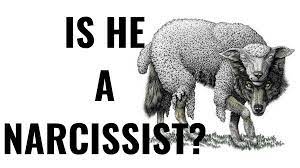Happiness is sometimes divided into hedonic (pleasure) and eudaimonic (thriving or purposeful living). Still, when people say “happiness,” they are referring to a combination of fleeting positive emotions and a more profound sense of purpose in life. In this article, we’ll look at what happiness looks like. We hope you enjoy reading it as much as we do.
What Does Happiness Look Like?
When we are depressed or going through a difficult time, it can be challenging to think about what happiness looks like or imagine what it would be like in our lives. It’s not always easy to pinpoint what makes us happy or to express it in words.
When our mind—our thoughts, words, or mentalization of happiness—fails us, it can be helpful to use imagery to explore what happiness looks like. When you take a break from contemplating what happiness looks or feels like, you can allow that part of your brain to relax and recover. Instead, create a picture that represents the things that make you happy.
Related Articles: Best Halloween Movies to Try Out in October 2023
You can draw using the online sketchpad below, or if you need some ideas for happiness, go to Pinterest and look at pictures that others have shared. Perhaps your beautiful desserts, gardens, or smiling people make you happy. Furthermore, take a moment to investigate and discover what happiness means to you.
What Exactly Is Happiness?
Happiness is an emotional state characterized by joy, fulfillment, satisfaction, and contentment. While happiness can be defined in various ways, it is frequently described as involving positive emotions and life satisfaction.
When most people discuss happiness, they may be referring to how they feel in the present moment, or they may be referring to a broader sense of how they think about life in general.
Because happiness is such a broad concept, psychologists and other social scientists often refer to it as subjective well-being when discussing this emotional state. Subjective well-being, as the name implies, focuses on an individual’s overall personal feelings about their life in the present.
Related Articles: Halloween Date Ideas: 27+ Options for You in 2023(Updated)
Two important aspects of happiness (or subjective well-being) are:
#1. Emotional equilibrium:
Everyone has positive and negative emotions, feelings, and moods. Happiness is generally associated with having more positive feelings than negative feelings.
#2. Life fulfillment:
This relates to how satisfied you are with various aspects of your life, such as your relationships, work, accomplishments, and other essential things.
Signs of Happiness
While people’s perceptions of happiness differ, there are some key indicators that psychologists look for when measuring and assessing satisfaction.
The following are some key indicators of what happiness looks like:
- Believing that you are living the life you desired
- Having the impression that your life is going well.
- Considering that you have achieved (or will achieve) your life goals.
- Being content with your life
- Having a more positive attitude than a negative attitude
From time to time, happy people experience a full range of human emotions, including anger, frustration, boredom, loneliness, and even sadness. Even when they are experiencing discomfort, they have an underlying sense of optimism that things will improve, that they will be able to deal with what is happening, and that they will be able to feel happy again.
How to Grow Happiness
While some people are naturally happier than others, there are things you can do to cultivate your sense of what happiness looks like.
#1. Strive for Intrinsic Goals
Achieving goals that you are intrinsically motivated to pursue, especially those centered on personal growth and community, can help boost happiness. According to research, following these intrinsically motivated goals can lead to greater happiness than pursuing extrinsic goals such as gaining money or status.
Related Articles: YOGA FOR WEIGHT LOSS: Simple Yoga Tips and Poses for Weight Loss
#2. Take Advantage of the Situation
According to studies, people tend to overlearn—they become so focused on accumulating things that they lose sight of actually enjoying what they are doing.
#3. Negative Thoughts Should Be Reframed
When you are stuck in a pessimistic mindset or experiencing negativity, look for ways to reframe your thoughts more positively.
Impact of Happiness
Happiness has been shown to predict positive outcomes in various situations.
- Positive emotions boost life satisfaction.
- Happiness assists people in developing more vital coping skills and emotional resources.
- Positive emotions are associated with improved health and longevity. Over 13 years, people who experienced more positive emotions than negative ones were more likely to survive, according to one study.
- Positive emotions boost resilience. Resilience enables people to manage stress better and recover from setbacks. One study, for example, discovered that happier people have lower levels of the stress hormone cortisol and that these benefits last over time.
- People who report a positive sense of well-being are more likely to engage in healthy behaviors such as eating fruits and vegetables and exercising regularly.
Related Articles: MICRO WEDDING: All You Need to Know
Habits of Happy Persons
Happiness is a fabricated emotion—you either have it or don’t. Long-term happiness is earned through your habits. Pleased people have developed habits that keep them satisfied daily. Experiment with their practices and see what they can do for you:
#1. They slow down to enjoy life’s small pleasures.
We are prone to falling into routines by nature. This is, in some ways, a good thing. It saves valuable brainpower while also providing comfort. However, it is possible to become so engrossed in your routine that you fail to appreciate the little things in life. Happy people understand the value of savoring the taste of their meal, reveling in the amazing conversation they just had, or simply stepping outside to take a deep breath of fresh air.
#2. They work out.
You are moving your body for just 10 minutes, releasing GABA, a neurotransmitter that calms your brain and keeps you in control of your impulses. Happy people plan and commit to regular exercise because they understand how beneficial it is to their mood.
#3. They lavish money on others.
According to studies, spending money on others makes you much happier than spending money on yourself. This is especially true for small gestures that demonstrate effort, such as going out of your way to buy a book you know your friend will enjoy.
#4. They surround themselves with like-minded individuals.
People’s happiness spreads. Surrounding yourself with happy people boosts your confidence, stimulates creativity, and is simply enjoyable. Also, spending time with negative people has the opposite effect. They want others to join their self-pity party, so they can feel better about themselves.
#5. They maintain a positive attitude.
Everyone, including happy people, experiences adversity. Instead of complaining about how things could or should have been, happy people think about what they’re grateful for. Then they find the best solution to the problem, deal with it, and move on. Pessimism is a powerful source of unhappiness.
Related Articles: HOW TO REKINDLE A RELATIONSHIP: BEST GUIDE FOR OPTIMAL RESULTS
#6. They get enough sleep.
I’ve beaten this one to death over the years, but I can’t emphasize enough how important sleep is for improving your mood, focus, and self-control. When you sleep, your brain recharges, removing toxic proteins that accumulate as byproducts of normal neuronal activity during the day. This ensures that you awaken alert and focused.
#7. They have in-depth discussions.
Happy people understand that happiness and substance go hand in hand. They avoid gossip, small talk, and passing judgment on others. Instead, they emphasize meaningful interactions. They interact with others on a deeper level because they know it feels good, creates emotional connections, and is an exciting way to learn.
#8. They assist others.
Helping others not only makes them happy, but it also makes you happy. Assisting others causes a surge of oxytocin, serotonin, and dopamine, all of which produce positive feelings. According to a Harvard study, employees who assisted others were 10 times more likely to be focused at work and 40% more likely to be promoted.
#9. They make a concerted effort to be happy.
Nobody, not even the most ecstatically happy people, wakes up every day feeling this way. They work harder than everyone else. They understand how easy it is to fall into a routine in which you don’t monitor your emotions or actively strive to be happy and positive. Also, people who are happy constantly assess their moods and make decisions with their happiness in mind.
#10. They are open to new experiences.
People’s core attitudes can be classified into two types: fixed mindsets and growth mindsets. You believe you are who you are and cannot change if you have a fixed mindset. When you are challenged, this causes problems because anything that appears to be more than you can handle is bound to make you feel hopeless and overwhelmed.
Challenges of Finding Happiness
While it is important to seek happiness, there are times when the pursuit of life satisfaction falls short. Among the difficulties to be aware of are the following:
Related Articles: Mixed Anxiety Depressive Disorder: Common Symptoms, Causes, and Treatments
#1. The Importance of the Wrong Things
Money may not be able to buy happiness, but studies show that spending money on experiences rather than material possessions can make you happier.
#2. Not Seeking Social Assistance
Social support entails having friends and loved ones to whom you can turn for help. According to research, perceived social support significantly impacts subjective well-being.
#3. Considering Happiness as a Goal
Happiness is not a goal that can be attained and then abandoned. It is a never-ending pursuit that necessitates constant nurturing and sustenance.
Conclusion
I hope you found this article valuable and informative and learned something new about what happiness looks like. What are your ideas about what joy looks like? Do you have a different definition? What do you believe is the most critical component of your happiness? Please share your thoughts in the comments section below!
Thank you for reading, and I hope you find happiness in your life journeys.
Frequently Asked Questions
What does happiness look like on a person?
People who are happy have one thing in common: they are content with what they have and don’t waste time worrying and stressing about what they don’t. Unhappy people do the opposite: they spend too much time worrying about what they lack. People who are happy live balanced lives.
How do you describe a happiness?
Happiness is an emotional state characterized by feelings of joy, fulfillment, satisfaction, and contentment. While happiness can be defined in a variety of ways, it is frequently described as involving positive emotions and life satisfaction. Happiness is generally associated with having more positive feelings than negative feelings.
What does happiness feel like physically?
On an emotional level, we can experience joy in a variety of ways, including tears, euphoria, a deep sense of contentment, and more. On a scientific level, our neurotransmitters, which are tiny chemical “messenger” cells that transmit signals between neurons (nerves) and other bodily cells, are responsible for our joy.
Is happiness a choice?
Is it possible to choose happiness? Yes! Many happy people understand that happiness is a choice, and it is up to them to make that choice every day. People who are happy are not bound by their circumstances, and they do not seek happiness in people or possessions.



